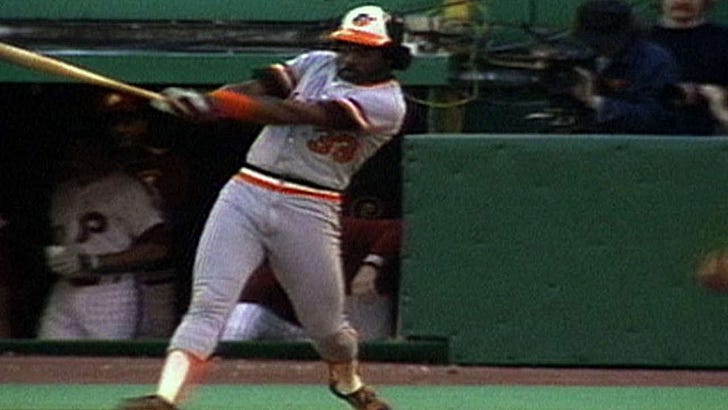Eddie Murray's Unique Distinction in the 3,000-Hit/500-Homer Club
And no, it's not his excellent sideburns/facial hair (although it should be).
There are several “magic numbers” within Major League Baseball that fans will immediately equate to greatness when they hear them. For position players, two of those numbers are 3,000 and 500.
Only 33 players have gained entry into the 3,000-hit club. There are also only 28 members of the 500-homer club. If we want to get even more exclusive (because why not, right?), just seven have achieved both during their respective careers:
Hank Aaron: 3,771 hits and 755 homers
Albert Pujols: 3,384 hits and 703 homers
Alex Rodriguez: 3,115 hits and 696 homers
Willie Mays: 3,293 hits and 660 homers
Rafael Palmeiro: 3,020 hits and 569 homers
Miguel Cabrera: 3,174 hits and 511 homers
Eddie Murray: 3,255 hits and 504 homers
Being on this list is already special, but what makes Murray unique from the rest? Well — he’s the only switch-hitter here.
If you love getting this kind of insight straight to your inbox, you’ll love my home run-related ebooks!
Single-Season Home Run Leaders for Each Team in Baseball History
Single-Season Home Run Leaders at Each Position for Every MLB Team
They’re just $7 on my Gumroad Store for Substack subscribers. If you become a paid subscriber to the MLB Daily Dingers newsletter, you can get them all for free.
Eddie Murray Was the Ultimate Threat from Both Sides of the Plate
Murray wasn’t the kind of guy who would bludgeon you with gaudy single-season numbers. He did win the 1977 American League Rookie of the Year Award and also led the league in homers (22) and RBI (78) in 1981 (but it was a strike-shortened season).
Although he posted five seasons of 30-plus homers during his 21-year Hall of Fame career, he never slugged more than 33 in a single season. He never registered a 200-hit season but finished with at least 170 knocks on 12 different occasions.
So, it was his yearly consistency (hence, the “Steady Eddie” nickname) that got him to where he eventually landed. While the majority of his production came as a left-handed hitter, Murray was a solid contributor from both sides of the plate.
Career vs. RHP: .293/.369/.491 with 2,233 hits, 362 homers, 1,341 RBI and 1,139 runs scored in 8,684 plate appearances
Career vs. LHP: .276/.340/.445 with 1,022 hits, 142 homers, 576 RBI and 488 runs scored in 4,133 plate appearances.
Murray Also Spread His Production Across Several Teams
Despite spending 13 of his 21 seasons with the Baltimore Orioles, Murray suited up for five (!) different teams as a big leaguer. That just feels like a lot for someone who was as consistently productive as he was.
Murray slugged 343 of his 504 homers for the Orioles. He added 65 in four seasons with the Los Angeles Dodgers, another 50 in three years with Cleveland and 43 in two seasons with the New York Mets. He only appeared in 46 games during his final season with the Anaheim Angels but added three more taters to his ledger.
Thanks for reading today’s edition of the MLB Daily Dingers Newsletter! I hope you enjoy your weekend. While you’re doing that, get prepared for the latest edition of random homers, which will be in your inboxes at 7 am ET on Monday morning.




Mickey Mantle obviously is the greatest switch hitter of all time and Eddie Murray is likely the second greatest. but it's a really close call with guys such as Tim Raines, Chipper Jones, Roberto Alomar, Pete Rose in regards to ranking them. In terms of power and RBI's Steady Eddie has them beat but Chipper Jones is close in those categories. Roberto Alomar did more in the annual RBI and homer tallies than Tim Raines but lacked in leading the league in any categories whereas Tim Raines won a batting title and led the league in doubles once and dominated the base paths leading the league in runs scored twice and stolen bases four times. Yet Alomar had a .300 career batting average opposed to Raines' .294. Then of course when it came to getting a hit Pete Rose, the hit king was the best as they ever were at that. Eddie Murray being on that elite list of seven is unsurpassed but ranking the best switch hitters after Mantle is just fun and interesting because of all their different styles of play. That's why these debates are fun because there's no right or wrong answer.
I was right! Figured switch-hitting was what you were talking about. I’m guessing Mantle didn’t get to 3,000 hits?